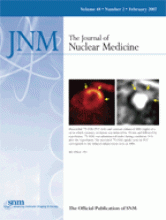Abstract
CT-based attenuation correction is a widely used option in commercial PET/CT scanners. However, as a result of a nonsimultaneous acquisition and differences in temporal resolution between both modalities, a potential misregistration between the PET and CT, especially in the thorax and the upper abdomen, can be found. We observed a substantial number of apparent perfusion defects in spatial coincidence with the misregistered segments of the heart and assumed these defects were related to an incorrect attenuation correction. The purpose of this work was to assess the clinical impact of emission–transmission misalignment in myocardial perfusion imaging with PET/CT and to investigate potential solutions. Methods: Twenty-eight coronary artery disease patients underwent PET/CT 13NH3 rest/stress examinations. The emission–transmission misalignment was corrected by manual registration and the PET studies were reconstructed again using the realigned CT images for attenuation correction. The effects of the registration were evaluated by quantitative analysis of the local tracer uptake on a polar map basis. In addition to manual registration, 2 alternative realignment methods were evaluated: mutual information–based image registration and emission-driven correction based on the outline of the heart in the PET image. Results: Manual realignment resulted in a change in the defect size of >10% of the left ventricle in 6 of 28 studies (21.4%); in 5 of the studies, this resulted in the disappearance of large apparent perfusion defects (15%–46% of the left ventricle), which were fully due to emission–transmission misregistration. Automatic image registration was unable to realign the datasets, whereas the emission-driven correction showed a good agreement with manual registration. Conclusion: Misregistration of PET and CT images is common in cardiac PET/CT studies and results in artifacts on the attenuation-corrected PET images, which appear to be corrected by repeating the PET reconstruction after manual realignment of the CT image data. In contrast to manual realignment, an automated emission-driven correction appears to be a promising approach.
Footnotes
-
COPYRIGHT © 2007 by the Society of Nuclear Medicine, Inc.







